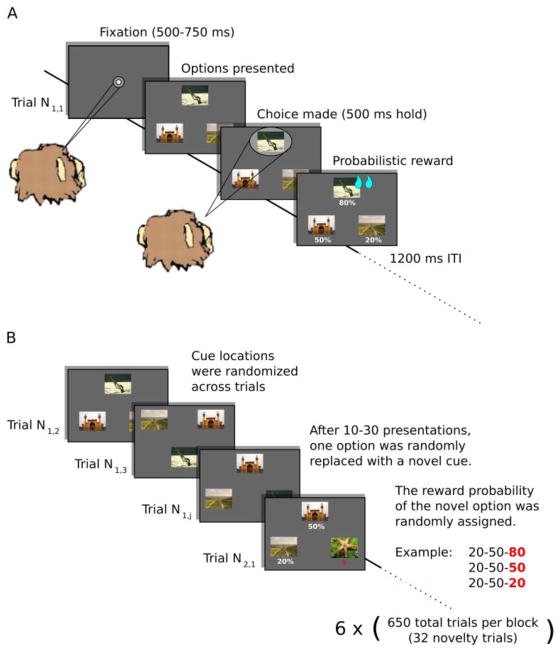Figure 1. Task design.
A) Sequence of events on a single trial. Following an initial fixation period, the choice options were presented and the animals made a saccade to one of the options to indicate their choice. A juice reward was then delivered probabilistically based on the assigned reward probability of the chosen cue. B) Novelty manipulation. A set of options was repeatedly presented for 10–30 trials, after which one of the existing options was replaced with a novel option. The novel option was randomly assigned its own reward probability. Novel options were introduced 32 times in a block of 650 trials. Trial Ni,j refers to the number of times, j, a particular set of choice options, i, was seen.

